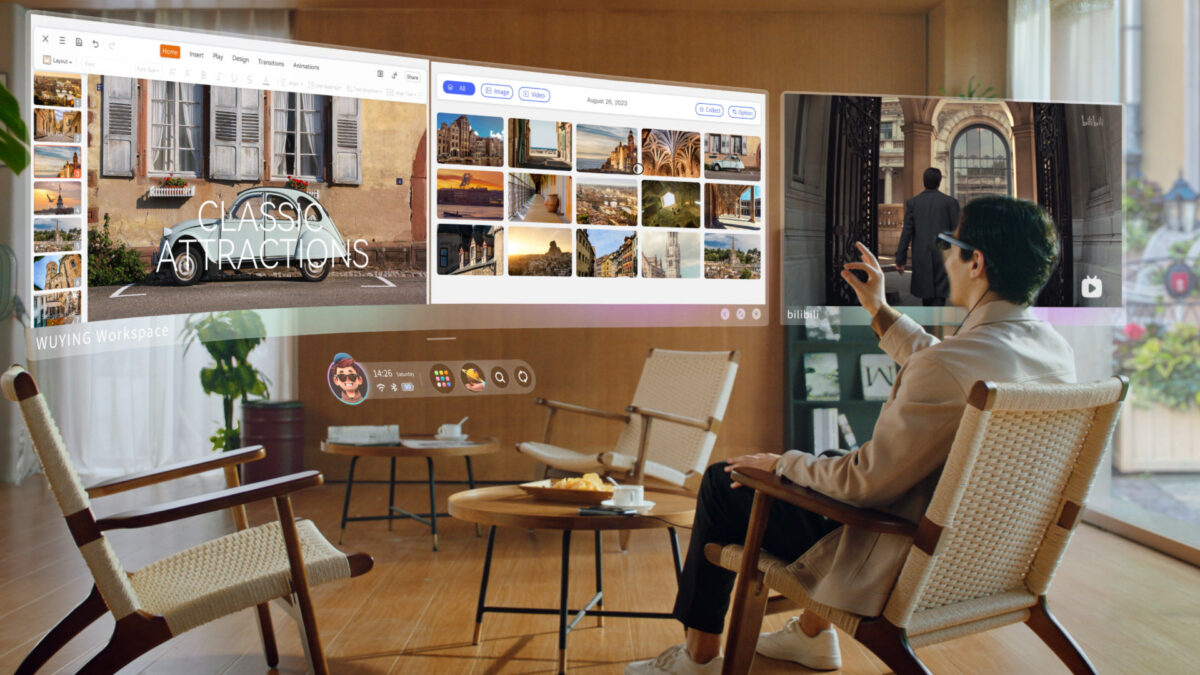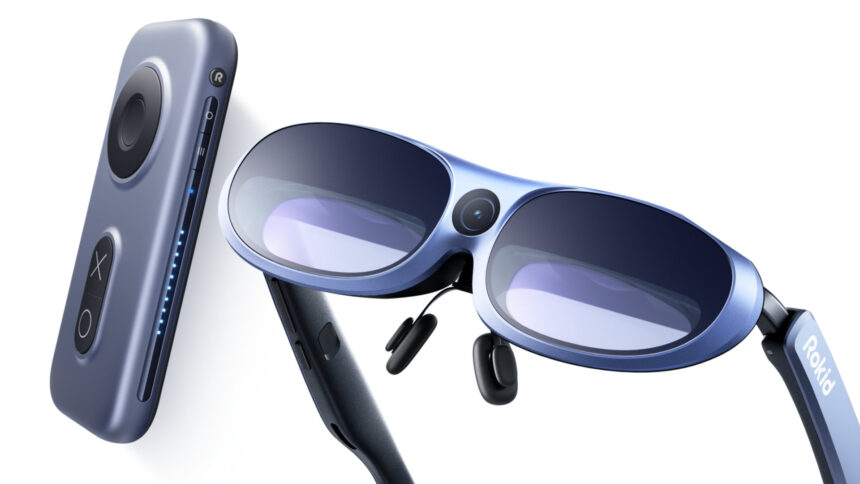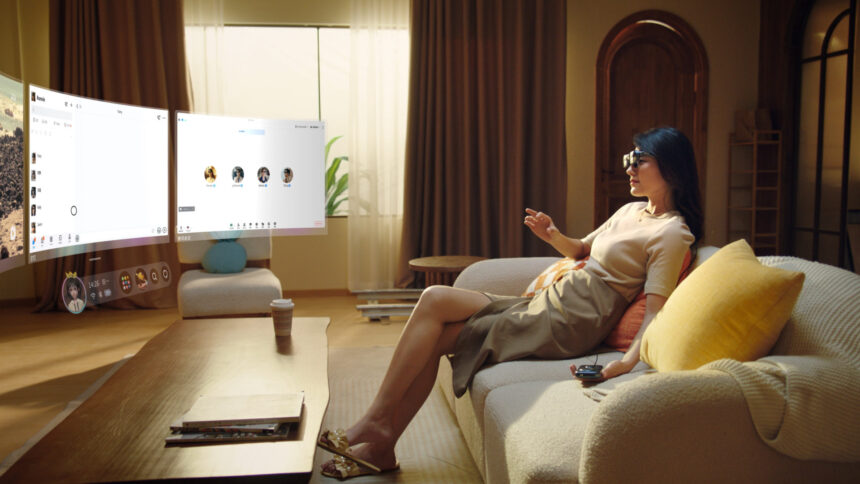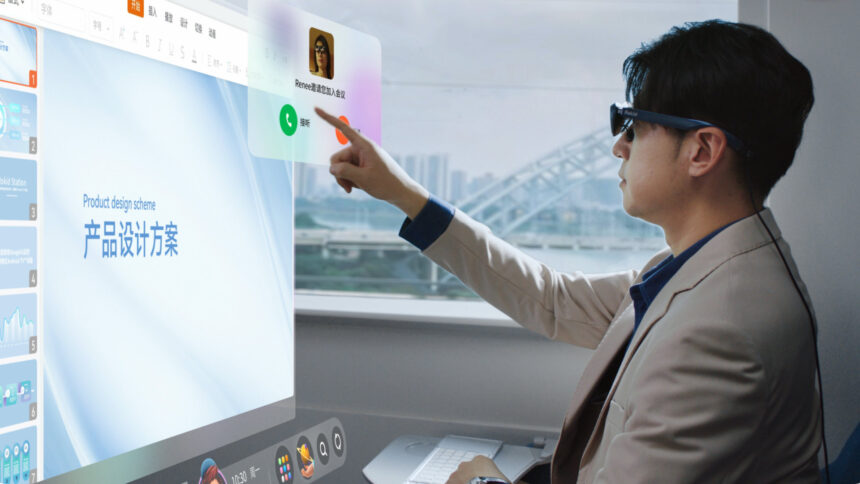Rokid's new AR glasses have a UI like Apple's Vision Pro

Rokid recently announced new AR glasses with a gesture-based user interface similar to Apple's Vision Pro.
Rokid has been designing smart glasses and AR headsets for many years and has developed its own operating system to manipulate virtual controls and navigate AR apps. Known as YodaOS, it recognizes micro-gestures of the hand, including a pinch gesture similar to that shown in Apple's demonstration of visionOS.
Rokid AR Studio
The new system from Rokid is called AR Studio, a bundle of Rokid Max Pro AR glasses and a Rokid Station Pro compute module. The combination is reminiscent of the Rokid Max + Station bundle we tested recently.
What makes AR Studio more versatile is the simultaneous localization and mapping (SLAM) technology built into the Rokid Max Pro glasses and the processing capabilities of the Rokid Station Pro.

Rokid AR Studio includes Max Pro glasses and Station Pro. | Image: Rokid
Rokid AR Studio can track head movement, hands, and nearby objects. The system can use this information in apps and games, just as a VR headset does.
Rokid AR Studio specifications
The display specifications of Max Pro glasses are quite similar to those of the Rokid Max — 1080p resolution with 600 nits of brightness, a 50-degree field of view (FOV), and a 90 to 120Hz refresh rate. That creates a large virtual screen equivalent to a 215" TV when viewed from 6 meters.
Rokid's Max Pro goes beyond smart glasses with a centrally located camera that calculates depth and tracks motion. Rokid claims centimeter accuracy with its deep learning algorithms.
The wearer's head and hands are tracked in 3D space with six degrees of freedom to recognize the angles and positions, allowing interaction with YodaOS and AR apps.

Rokid's YodaOS appears similar to Apple's Vision Pro operating system. | Image: Rokid
Rokid Station Pro is a pocket-sized external compute module that connects to Max Pro glasses to supply power, process sensor data, run apps, and provide video for the displays.
It contains a Qualcomm Snapdragon XR2+Gen1, 12GB memory, 128GB storage, and a fan for active cooling. Based on those specifications, CPU and GPU performance should be similar to Meta's Quest Pro.
The glasses form factor
Rokid's AR Studio comes in the form of glasses, providing see-through AR with good clarity of the actual environment. Sharp graphics are superimposed.
The experience won't be as immersive as the mixed reality passthrough presented by a VR headset since the FOV is limited to 50 degrees. Most VR headsets enjoy an FOV that's about twice as large.

Rokid AR Studio presents a large screen and tracks head and hands. | Image: Rokid
Current VR headsets struggle with passthrough fidelity, whereas the Rokid Pro Max's see-through view will be as sharp, stable, and colorful as the real world. However, the Pro Max glasses use birdbath optics, which dim the view somewhat while dark graphics can appear translucent. There are pros and cons to each method.
Price and availability
Rokid's AR Studio is launching first in China but should become available elsewhere in the coming months. The price is currently unknown.
Once limited to enterprise users, the mixed reality and AR marketplace will soon become more intriguing for consumers. Meta's Quest 3 is arriving in a matter of weeks, Apple's Vision Pro is coming in early 2024, and the Rokid AR Studio could reach other markets within months.
All three sound like exciting devices, but we'll have to wait for hands-on experiences to know how well each AR/mixed reality solution works, the depth of the ecosystem, and which offers the best value overall.
Note: Links to online stores in articles can be so-called affiliate links. If you buy through this link, MIXED receives a commission from the provider. For you the price does not change.